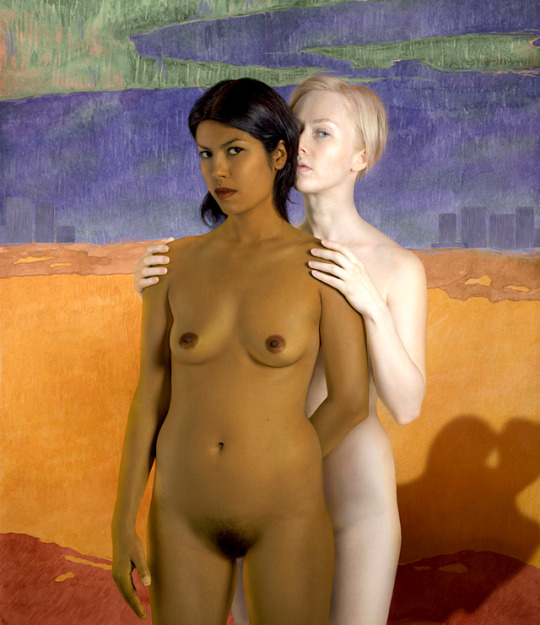Antique pictures - arts, history, natural history, advertising, oddities Most pictures are clickable
Saturday, 27 February 2021
Hiroshi Yoshida
Exquisite Paintings By Japanese Artist
Capturing the scenic beauty of places through art is a skill that several artists have a keen eye and hand for, and their talent seeps through their vivid paintings.
Taking inspiration from his travels to South Asia in the 1930s, renowned 20th-century Japanese artist and woodblock print-maker, Hiroshi Yoshida, put together a collection of shin-hanga prints from the places he visited in India.
Shin-Hanga is an art movement that revolutionized the style of prints in Japan from their traditional ukiyo-e style towards a more western approach. The shin-hanga style comprises landscape prints, birds and flowers, and prints of actors and beauties.

Hiroshi Yoshida followed this style for his landscape art as well. He was one of the few Japanese artists at the time who made it a point to travel the world and practice his art in different cities. His artwork and prints were a true reflection of his love for traveling and seeing the world.
What was most unique about his woodblock style was how he incorporated Japanese elements while painting non-Japanese subjects.
His journey to India was his fourth trip abroad. During his time here, he made numerous prints of well-known and recognized monuments such as the Taj Mahal, the Golden Temple, Victoria Memorial and many more.
Paintings Of India During The 1930s
Here is a compilation of some of Hiroshi Yoshida’s best artwork for you to dive into and explore.
 Ghats in Banaras
Ghats in Banaras
 Moonlight of the Taj Mahal
Moonlight of the Taj Mahal Snake charmers in India
Snake charmers in India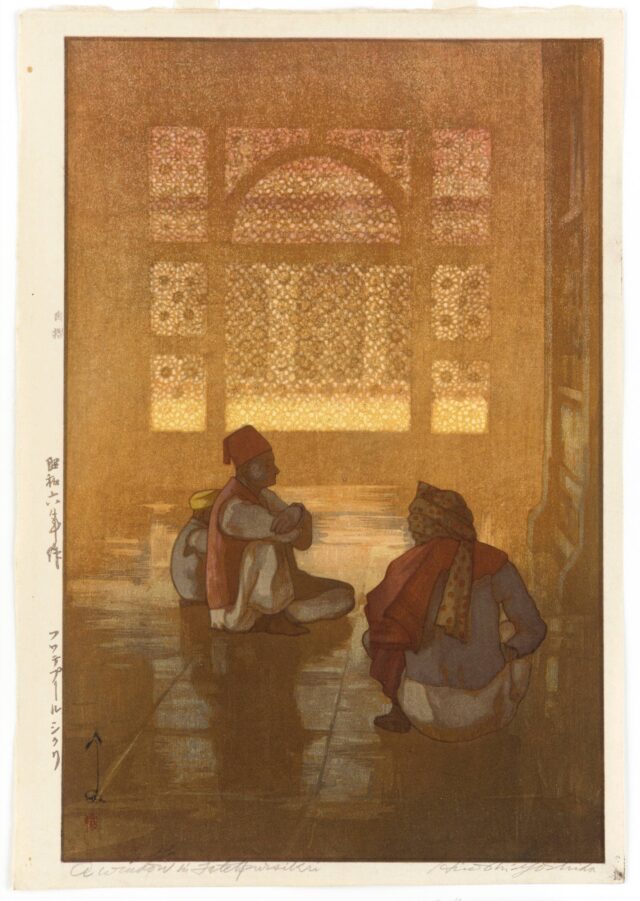 Window in Fatehpur Sikri
Window in Fatehpur Sikri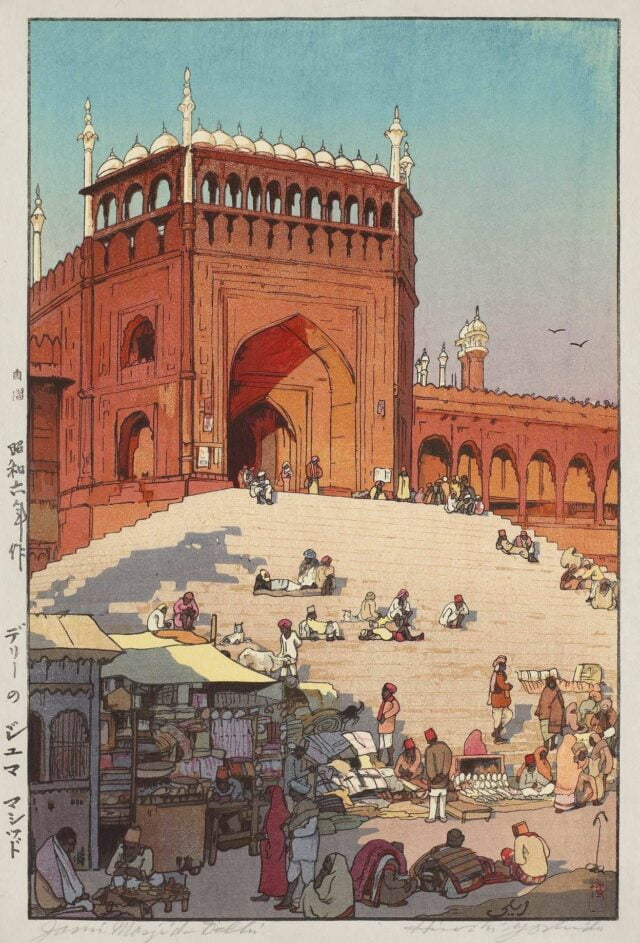 Jama Masjid, Delhi
Jama Masjid, Delhi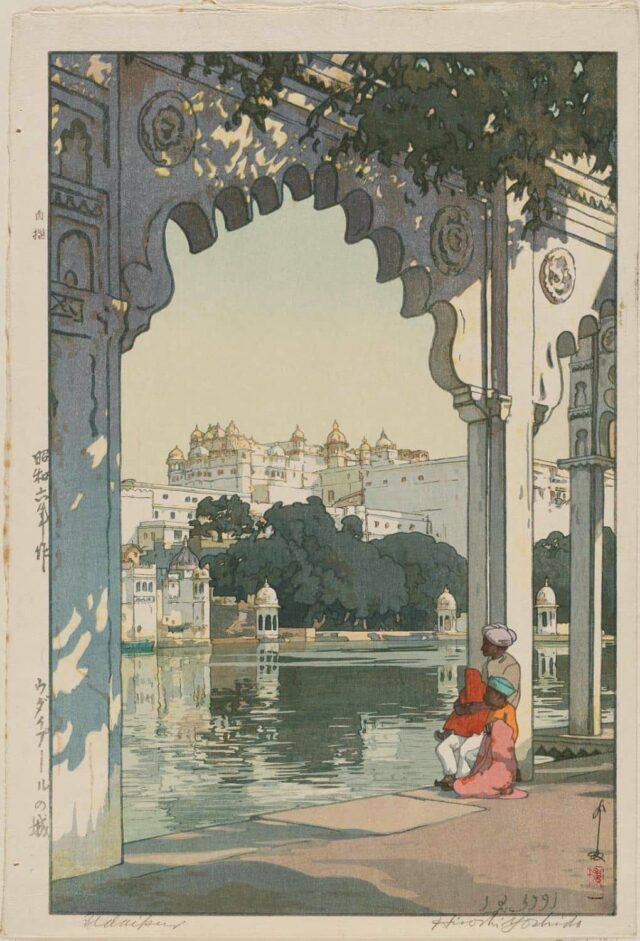 Udaipur Palace
Udaipur Palace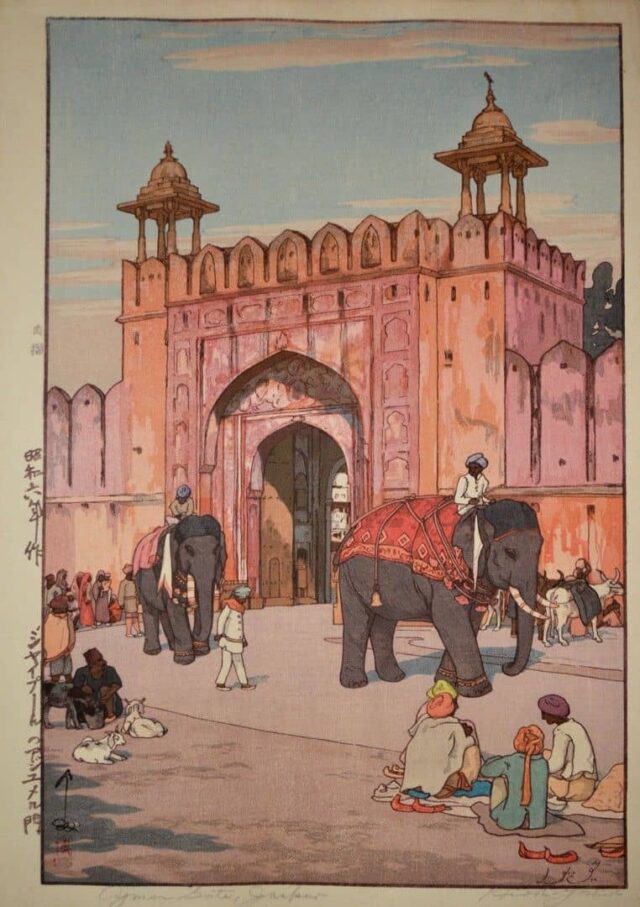 Ajmer Gate, Jaipur
Ajmer Gate, Jaipur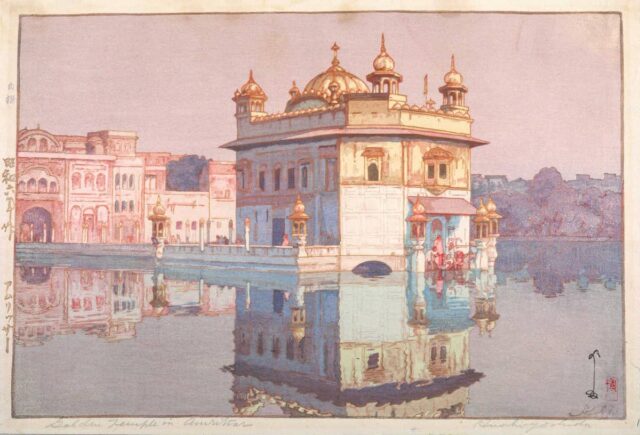 The Golden Temple, Amritsar
The Golden Temple, Amritsar Victoria Memorial, Calcutta
Victoria Memorial, CalcuttaA glimpse at these paintings gives us an artistic and aesthetic image of what India looked like during the 1930s. His elegant and sophisticated style is a true celebration of India’s history and has perfectly captured the picturesque scenes of our country.








